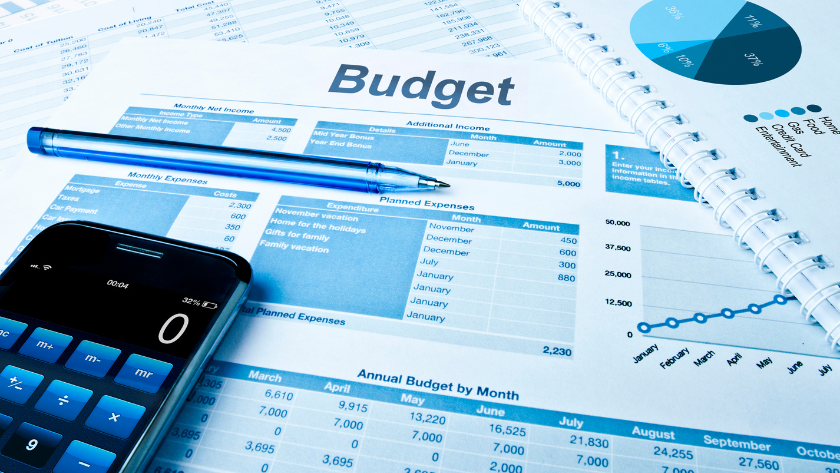Did you know that one small change in your life now could have an exponentially HUGE impact on your future? No, this speech is not about eating caviar or wagyu steak every night. In fact, this is quite the opposite. Oftentimes, food expenses and eating out is one of the biggest budget busters. It is so easy to lose track of how much of our money is going to what we put into our bodies… then it is gone. I know this was definitely the case for me and my family. Before I really started studying more about personal finance and becoming committed to paying off my debt, there were at least 3 major pitfalls that made me spend nearly $1,500 a month on food alone.
1. Eating out at lunch while working.
I would spend $10 or more a day on lunch: and that was just a salad! Oh, trust me, I would try and find all sorts of ways to justify why I needed to spend $10 on lunch. I thought, “It’s a fresh and healthy salad and this way I don’t have to take the time to chop up all the vegetables. It’s the best way I’m going to get my nutrients/healthy food.” Or, I’m saving so much time by simply buying my lunch instead of packing it. Between my husband and I, we were paying $17-$18 a day for lunch alone. I’ll average that out to $17.50 a day or roughly $350 a month! Ouch!
2. Grocery shop without a plan.
Besides lunch, my husband and I would go to the grocery store without any plan of what we were buying. Sure there were a few things we knew we’d need to buy on a consistent basis, but we had done no meal planning or put little thought into what food we already had at home. We’d dread grocery shopping because it became so tedious to try and do the meal planning while in the aisle full of people hustling to get their shopping done. Then, there was the impulse buying! Oh, the impulse buying! Boy, did that add up quickly! Since we had no plan, we fell victim to the end caps full of delicious treats. Oh, there’s something else we “needed”… pay no attention to the fact that 2 seconds ago, we had zero intention or thought of “needing” this item before. I swear, we more than doubled or tripled the amount we actually needed to spend at the grocery store due to our lack of planning and impulse buying. On average, we spent at least $160 a week on groceries or roughly $700 a month! And that was even before we had kids!
3. Going out to eat often without budgeting for it.
To each his/her own, but I loved to go out to eat every now and then. There is just something about having someone else do all the work for you: prep the food, cook it, and best of all, NO DISHES!! All this, while you get to have a good time, maybe a drink or two, in the company of the people you love. I’m not knocking eating out… I love it just as much as the next person. However, this is one luxury that can easily blow up a budget if you are not mindful. Before my husband and I had kids, we loved to eat out at least once a week, sometimes even more if we wanted to do brunch. We didn’t necessarily eat at the most expensive places. When we lived in Minneapolis, we made it a weekly tradition to go to IHOP on Sunday mornings. We’d do date night at least once a week. I’d average out weekly eating out/happy hours spend to $100 on a weekly basis (not including lunches calculated in point #1)… sometimes more, sometimes less. This came to about $430 each month.
Much has changed since that time that we spent (gulp!) $1,500 a month on food. After I had my second child, the financial stress and our debt was not another thing I wanted to have to worry about. Plus, we wanted to set our kids up for a better financial future and save for their college. We had a NEW perspective on what we wanted out of life and we needed to change our financial habits. Here are the tips we learned to cut our food spending in half!
1. Pack a lunch.
I’ve been astonished at how much this one simple thing can have such an enormous impact on our finances. Between my husband and I, we no longer eat out for lunch. We spend roughly $3 a day on both of our lunches: good ole peanut butter and jelly sandwich, applesauce/piece of fruit, and a cheese stick. We used to spend $17.50 a day, now we spend $3.
2. Meal planning + creating a shopping list (and sticking to it!).
There’s so much to say about how to cut back your grocery bill, but here are just a few tips:
- First, each weekend, I’ll make a menu of meals for the following week. I always make sure a meal or two is reserved for leftovers days since there inevitably are always leftovers. When creating this menu, I’ll see what ingredients I already have in my cupboards and think of recipes that include these ingredients so I don’t have to buy more things than I have to.
- Next, I create a grocery list of items I’ll need for that list.
- Cut things like soda or other drinks besides milk and coffee… soft drinks/sports drinks add up so quickly!
- Food for our lunches onto the list.
- When in the store, stick to the list. If it’s not on the list, it doesn’t go in the cart. Even my four-year-old has caught onto the game and calls to me across the store (to my amusement), “Mom, are Oreos on the list?!?”
- Shopping at Aldi, which has saved me roughly 20% on average for the items I buy. Now, we’ve gotten our groceries down to an average of $80 a week for our family of four and includes lunches for my husband and me. This is $4,160 a year (about $350 a month).
3. Limiting our eating out.
Now that we have kiddos, eating out with the kids is not as relaxing as it once was. Plus, it takes extra planning to arrange care for our two boys when we want to go out to eat, so I’ll admit, this savings hack has not been due to sacrifice as due to our circumstances. Now my husband and I will average eating out about 1.5 times a month, which comes out to $150 a month at most or $1,800 a year. One of these days, after we’ve paid off debt and established more financial security and the kids are older, we may add more back into this budget, but for now, this fits our lifestyle.
This means we’ve saved $980 each MONTH! Or $11,760 each year. WOW! This isn’t even the most interesting part. If we weren’t putting all this money toward paying off our debt at the moment, we could put these savings into 401K and/or other mutual funds/investments. In 25 years, these dollars could be almost $1.3M! Crazy to think that a few small changes in our daily habits could make such a big impact on having financial security, being able to give generously, and make a difference in the world. Peanut butter and Jelly sandwiches never tasted so good!





